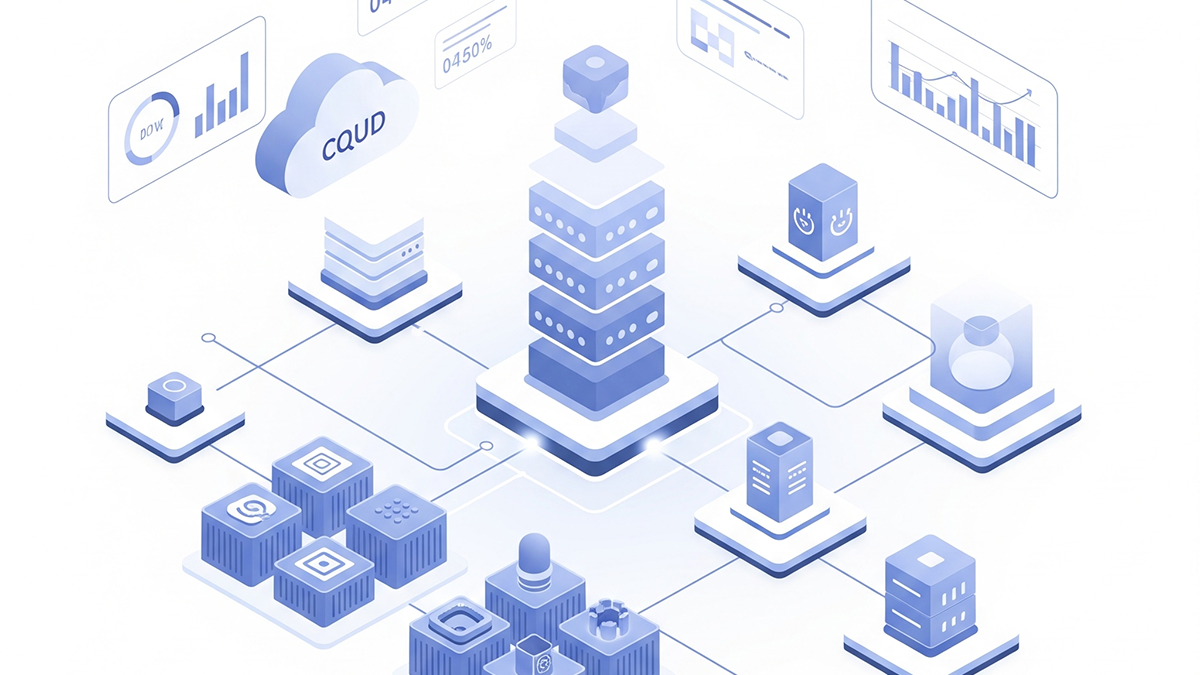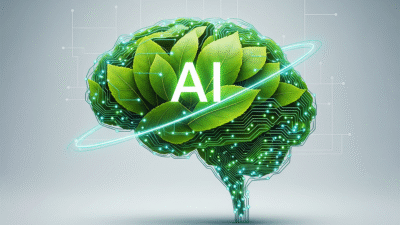Modern IT infrastructure is the backbone of scalable and resilient digital businesses. In today’s fast-paced, data-driven world, organizations must adopt agile, cloud-native, and automated systems to remain competitive.
This blog explores how technologies like cloud computing, edge computing, and infrastructure code (IaC) are transforming traditional IT environments. It delves into strategies for achieving scalability, enhancing system reliability, and ensuring seamless integration across platforms.
Whether you’re a startup or an enterprise, building a modern infrastructure is essential to support growth, improve performance, and adapt to changing business demands. Learn how to future-proof your operations with next-gen IT infrastructure solutions.
Table of Contents:
- Introduction
- Evolution of traditional to cloud-native infrastructure
- Cloud, edge, and hybrid deployment models
- DevOps, IaC, and CI/CD integration
- Disaster recovery and cybersecurity considerations
- Case studies of modern enterprise infrastructures
- Conclusion
1. Introduction
- In an era defined by rapid technological advancement and digital transformation, scalable IT infrastructure is no longer optional is essential. Modern businesses must be prepared to handle fluctuating workloads, increasing data volumes, and evolving user demands without compromising performance or reliability.
- Traditional, static infrastructure models can no longer keep up. Today’s organizations are turning to cloud computing, virtualization, edge technologies, and infrastructure as code (IaC) to build flexible, dynamic, and future-ready environments.
- This blog delves into the core components of modern IT infrastructure, exploring how they enable scalability, enhance operational agility, and support sustained growth in an ever-changing digital landscape.
2. Evolution of traditional to cloud-native infrastructure
The journey from traditional IT infrastructure to cloud-native environments marks one of the most significant transformations in modern technology. This evolution has been driven by the need for greater flexibility, scalability, and efficiency in managing digital workloads.
Traditional IT Infrastructure
- Traditional IT infrastructure relies heavily on physical hardware, centralized servers, and manual processes.
- Organizations would invest in on-premises data centers, purchasing and maintaining servers, storage, and networking equipment.
- IT teams were responsible for provisioning resources, managing system updates, handling scalability limitations, and addressing hardware failures.
- While this model provided control and security, it lacked agility and was cost-intensive, especially for growing businesses.
Virtualization: The First Step
- The first major shift came with virtualization, which allowed multiple operating systems and applications to run on a single physical server through virtual machines (VMs).
- This improved resource utilization, reduced hardware dependency, and made infrastructure slightly more scalable and cost-effective. However, it still requires significant manual oversight and on-premises infrastructure.
The Rise of Cloud Computing
- The next evolution came with cloud computing, enabling businesses to access IT resources on demand via the internet.
- Public cloud platforms like AWS, Microsoft Azure, and Google Cloud offer computer power, storage, databases, and other services without the need for physical hardware.
- This marked the beginning of Infrastructure-as-a-Service (IaaS), where organizations could quickly scale up or down based on demand and only pay for what they used. Cloud computing dramatically lowered the barrier to entry for startups and empowered enterprises to innovate faster.
Cloud-Native Architecture
- As businesses matured in their cloud journeys, the concept of cloud-native infrastructure emerged.
- Unlike lift-and-shift migrations that simply move traditional applications to the cloud, cloud-native design involves building applications specifically to run in the cloud.
- It leverages microservices architecture, containers (like Docker), container orchestration platforms (like Kubernetes), serverless computing, and continuous integration/continuous delivery (CI/CD) pipelines.
Key benefits of cloud-native infrastructure include:
- Elastic Scalability: Automatically scales with demand, ideal for unpredictable workloads.
- High Availability: Applications are distributed and fault-tolerant by design.
- Agility and Speed: Developers can deploy, test, and iterate faster with reduced operational overhead.
- Cost Efficiency: Pay-as-you-go pricing models and auto-scaling reduce resource waste.
From Static to Dynamic Infrastructure
- The transition from traditional to cloud-native is essentially a shift from static, hardware-bound systems to dynamic, software-defined environments.
- Modern IT teams now focus more on automation, orchestration, and observability than on racking and stacking servers.
- Tools like Terraform, Ansible, and Kubernetes have become foundational to managing infrastructure as code and scaling systems efficiently.
3. Cloud, edge, and hybrid deployment models
- In the fast-paced world of IT, the way businesses deploy and manage infrastructure has evolved dramatically. Gone are the days when traditional, monolithic systems ruled the industry.
- In their place, deployment models like cloud, edge, and hybrid computing have taken center stage. These models offer scalable, efficient, and flexible solutions that align with the dynamic needs of modern businesses. In 2025, understanding these models isn’t just advantageous; it is essential.
The Cloud Computing Model
Cloud computing is the on-demand delivery of computing resources servers, storage, databases, networking, and software over the internet. It offers rapid innovation, flexible resources, and economies of scale.
1) Types of Cloud Services:
- Infrastructure as a Service (IaaS): Basic computing resources like virtual machines and storage (e.g., AWS EC2, Azure VMs).
- Platform as a Service (PaaS): Development tools and frameworks for building, testing, and deploying applications (e.g., Google App Engine).
- Software as a Service (SaaS): Software delivered over the web (e.g., Salesforce, Microsoft 365).
2) Deployment Types:
- Public Cloud: Hosted by third-party providers and shared among multiple users.
- Private Cloud: Dedicated to a single organization.
- Hybrid Cloud: Combines public and private clouds with orchestration.
3) Key Benefits:
- Scalability and elasticity
- Cost-efficiency (pay-as-you-go)
- Simplified maintenance
- Global accessibility
4) Use Cases:
- Web hosting
- Big data analytics
- Disaster recovery
- Development and testing environments
5) Challenges:
- Latency issues
- Vendor lock-in
- Security and compliance risks
The Edge Computing Model
Edge computing processes data closer to the source of data generation, such as IoT devices or sensors, rather than sending it to centralized cloud servers. It is ideal for applications that require real-time decision-making.
1) Definition:
- Moves computer and storage closer to the user or device.
- Reduces reliance on centralized data centers.
2) Advantages:
- Ultra-low latency
- Reduced bandwidth usage
- Improved reliability and responsiveness
3) Use Cases:
- Smart cities
- Autonomous vehicles
- Augmented and virtual reality
- Industrial IoT and predictive maintenance
4) Challenges:
- Device management complexity
- Security vulnerabilities at the edge
- Infrastructure cost and maintenance
The Hybrid Deployment Model
Hybrid computing combines on-premises infrastructure with public and/or private clouds. It allows data and applications to be shared across environments for greater flexibility and deployment control.
1) Definition:
- Integration of multiple IT environments
- Unified management and orchestration
2) Benefits:
- Regulatory compliance with localized data storage
- Optimized resource allocation
- Business continuity and disaster recovery
3) Use Cases:
- Finance: Sensitive data on-premises; workloads in the cloud
- Healthcare: Data compliance with cloud agility
- Retail: Scalability during peak seasons
4) Challenges:
- Integration complexity
- Data consistency
- Security and policy management
Comparing the Models
1) Performance:
- Cloud: High scalability but can suffer from latency
- Edge: Low latency but limited processing power
- Hybrid: Balanced performance with strategic resource allocation
2) Cost:
- Cloud: Cost-effective for dynamic workloads
- Edge: Higher upfront costs but saves bandwidth
- Hybrid: Mix of CapEx and OpEx
3) Security & Compliance:
- Cloud: Strong provider security, but shared responsibility
- Edge: Needs local security controls
- Hybrid: Enhanced control over sensitive data
4) Flexibility:
- Cloud: Best for rapid scaling
- Edge: Best for real-time local processing
- Hybrid: Best for complex, regulated environments
Future Trends and Innovations
- 5G Integration: Enhances edge computing with faster connectivity.
- AI and Automation: Dynamic resource allocation, predictive scaling.
- Serverless Edge: Running lightweight functions directly on edge devices.
- Distributed Cloud: Unifies public, private, and edge under a single management framework.
- Zero Trust Security: Applies strict identity verification across all deployment models.
4. DevOps, IaC, and CI/CD integration
As modern IT infrastructure evolves to meet the demands of rapid development and scalable operations, three core methodologies have emerged as critical enablers: DevOps, Infrastructure as Code (IaC), and Continuous Integration/Continuous Delivery (CI/CD). These practices are foundational to building and maintaining agile, scalable, and automated environments in today’s digital ecosystem.
DevOps: Bridging Development and Operations
DevOps is a cultural and technical movement aimed at breaking down traditional silos between software development and IT operations. It promotes collaboration, automation, and continuous feedback across the application lifecycle to deliver software faster, more reliably, and at scale.
Key principles of DevOps include:
- Automation of testing, deployment, and infrastructure provisioning
- Collaboration across multidisciplinary teams
- Monitoring and feedback loops for continuous improvement
- Resilience and recovery built into workflows
By embracing DevOps, organizations can respond to changing market needs quickly while maintaining high service reliability essential for modern, scalable IT infrastructure.
Infrastructure as Code (IaC): Automating Infrastructure Management
Infrastructure Code (IaC) revolutionizes how infrastructure is provisioned and managed. Rather than manually configuring servers, networks, and environments, IaC enables IT teams to define infrastructure configurations through code files.
Popular IaC tools include:
- Terraform (by HashiCorp)
- AWS CloudFormation
- Ansible
- Pulumi
Benefits of IaC:
- Consistency: Eliminate configuration drift between environments.
- Speed: Provision of complex infrastructure in minutes.
- Version control: Store infrastructure configurations in source code repositories.
- Scalability: Quickly replicate infrastructure across regions or teams.
- Auditability: Track changes, rollbacks, and updates efficiently.
IaC is crucial for maintaining scalable and repeatable environments in multi-cloud or hybrid-cloud architectures, reducing human error, and improving operational efficiency.
CI/CD: Continuous Integration and Continuous Delivery
Continuous Integration (CI) and Continuous Delivery/Deployment (CD) form the backbone of agile software delivery. These practices allow developers to integrate code changes frequently, test automatically, and deliver applications quickly and reliably.
- CI (Continuous Integration): Developers merge code changes into a shared repository multiple times a day. Automated tests verify code correctness and catch issues early.
- CD (Continuous Delivery): Automates the release process to staging or production environments, ensuring code is always in a deployable state.
- Continuous Deployment: An advanced form of CD where every validated change is deployed automatically to production without manual approval.
CI/CD pipelines use tools like:
- Jenkins
- GitLab CI/CD
- GitHub Actions
- CircleCI
- ArgoCD (for Kubernetes-based delivery)
By integrating CI/CD with IaC and DevOps practices, organizations can:
- Accelerate development cycles
- Reduce downtime and deployment risks
- Ensure stable, repeatable releases
- Scale applications and infrastructure in tandem

5. Disaster recovery and cybersecurity considerations
Disaster Recovery and Cybersecurity Considerations
As businesses grow increasingly dependent on digital systems, the risks associated with downtime, data breaches, and cyberattacks have never been higher. Scalable IT infrastructure must not only support performance and agility, but also ensure resilience, business continuity, and data security. Two vital aspects that underpin a reliable infrastructure are Disaster Recovery (DR) and Cybersecurity.
Disaster Recovery: Ensuring Business Continuity
Disaster recovery refers to the strategies and technologies used to quickly restore IT systems and data after a disruption, whether due to natural disasters, cyberattacks, hardware failures, or human error.
Key components of a robust disaster recovery plan include:
- Data Backups: Regular, automated, and encrypted backups stored in multiple locations (on-premises and cloud).
- Redundancy: Use of failover systems, clustered databases, and geographically distributed servers.
- Recovery Time Objective (RTO): The maximum acceptable downtime after a failure.
- Recovery Point Objective (RPO): The maximum acceptable amount of data loss, measured in time.
- Disaster Recovery as a Service (DRaaS): Cloud-based solutions that replicate infrastructure and applications in real time to minimize downtime and simplify recovery.
Technologies such as containerization, immutable infrastructure, and infrastructure as code (IaC) further enhance disaster recovery by allowing for fast and consistent system redeployments.
Cybersecurity Considerations: Protecting Digital Assets
Modern IT infrastructure must be built with security by design, not as an afterthought. With growing threats like ransomware, DDoS attacks, phishing, and insider breaches, a proactive and multi-layered cybersecurity strategy is critical.
Key cybersecurity best practices for scalable infrastructure include:
- Zero Trust Architecture: Never trust, always verify users and systems must continuously authenticate and be authorized based on policies.
- Identity and Access Management (IAM): Fine-grained access control to ensure users and systems only have the permissions they need.
- Network Segmentation: Isolate workloads and environments to limit the blast radius of attacks.
- Encryption: Protect data at rest and in transit using strong cryptographic protocols.
- Real-Time Monitoring & Threat Detection: Use SIEM (Security Information and Event Management) systems, intrusion detection, and behavior analytics to spot and respond to threats early.
- Security Automation: Integrate security checks into CI/CD pipelines and automate patch management to reduce vulnerabilities.
- Compliance and Governance: Align infrastructure with regulatory frameworks like GDPR, HIPAA, ISO 27001, and others.
The Convergence of DR and Cybersecurity
Disaster recovery and cybersecurity are no longer separate domains. Ransomware attacks, for example, blend the need for quick recovery with airtight security. As a result, organizations must:
- Test disaster recovery plans regularly, simulating cyberattacks scenarios
- Harden infrastructure against threats while ensuring recoverability
- Invest in cyber insurance and incident response planning
- Use AI and machine learning to enhance both threat detection and recovery speed
Modern infrastructure isn’t just about speed and scale; it must also be resilient, secure, and prepared for the unexpected.
6. Case studies of modern enterprise infrastructures
To understand how modern IT infrastructure drives real-world scalability, agility, and resilience, it’s helpful to examine how leading organizations have adopted and benefited from cloud-native architectures, automation, and hybrid strategies. These case studies showcase how businesses across industries are transforming their infrastructure to meet 21st Century demands.
1) Netflix: Scaling Global Streaming with Microservices and Cloud-Native Architecture
Challenge:
Netflix needed to support millions of users worldwide with high availability and seamless performance across devices and geographies.
Solution:
- Migrated from monolithic on-prem infrastructure to AWS cloud.
- Adopted a microservices architecture with over 1,000 microservices deployed via containers.
- Implemented Infrastructure as Code (IaC) and Chaos Engineering to test resilience.
- Utilized global content delivery networks (CDNs) for fast video streaming.
Outcome:
Netflix now delivers highly available, low-latency video streaming to over 200 million users. Their cloud-native infrastructure enables them to scale instantly during peak times (e.g., new releases) without service disruption.
2) Capital One: Banking in the Cloud with Compliance
Challenge:
As a financial institution, Capital One needed to innovate rapidly while maintaining strict regulatory compliance and security standards.
Solution:
- Migrated to AWS to adopt a cloud-first strategy.
- Embraced DevOps and CI/CD pipelines to reduce deployment times from months to minutes.
- Leveraged serverless computing (e.g., AWS Lambda) to build scalable backend systems.
- Adopted real-time monitoring, data encryption, and IAM policies to secure sensitive data.
Outcome:
Capital One became the first major U.S. bank to go all-in on the public cloud. Its modern infrastructure allows fast innovation with a strong security and compliance posture.
3) Shopify: Handling eCommerce Surges with Kubernetes
Challenge:
Shopify needed to support thousands of online merchants and accommodate massive traffic spikes during events like Black Friday and Cyber Monday.
Solution:
- Shifted to a containerized infrastructure using Kubernetes.
- Employed auto-scaling to dynamically allocate compute resources based on traffic patterns.
- Used service mesh and observability tools to maintain service performance and uptime.
- Incorporated IaC and CI/CD to automate deployments and testing.
Outcome:
Shopify reliably serves millions of users during peak demand. Their scalable infrastructure supports high throughput, fault tolerance, and developer productivity.
4) NASA JPL: Scientific Computing with Hybrid Cloud
Challenge:
NASA’s Jet Propulsion Laboratory (JPL) needed flexible computing power for complex simulations and massive datasets.
Solution:
- Built a hybrid cloud infrastructure combining on-prem HPC (High-Performance Computing) with public cloud scalability.
- Adopted cloud-native tools for data analytics and mission simulations.
- Leveraged DevSecOps practices to embed security into the development lifecycle.
Outcome:
JPL can scale computing power as needed while keeping sensitive operations on secure internal networks. The hybrid model balances performance, flexibility, and security for mission-critical operations.
5) Spotify: Global Audio Streaming at Scale
Challenge:
Spotify requires an infrastructure that could support real-time audio delivery, user personalization, and massive global growth.
Solution:
- Migrated from self-managed data centers to Google Cloud Platform (GCP).
- Implemented Kubernetes for container orchestration and service scaling.
- Utilized machine learning infrastructure for music recommendations and user behavior analysis.
- Deployed a global edge network to reduce latency.
Outcome:
Spotify now delivers seamless audio streaming and personalized recommendations to over 500 million users globally, powered by a scalable and intelligent infrastructure.
7. Conclusion
- As digital transformation accelerates across industries, modern IT infrastructure has become a foundational pillar for business success. The shift from traditional, hardware-centric systems to cloud-native, scalable, and automated environments enables organizations to respond to evolving demands with agility and resilience.
- From DevOps and Infrastructure as Code (IaC) to CI/CD pipelines and hybrid cloud deployments, today’s infrastructure is designed for rapid innovation, operational efficiency, and secure scalability.
- However, with great flexibility comes increased responsibility. Disaster recovery planning, robust cybersecurity practices, and continuous optimization are essential for sustaining growth in a dynamic digital landscape.
- By learning from leading enterprises and adopting modern architectural principles, businesses can not only scale effectively but also future proof their operations for the next wave of technological evolution.
- Now more than ever, building scalable, secure, and intelligent infrastructure isn’t just an IT goal, it is a strategic business imperative.




